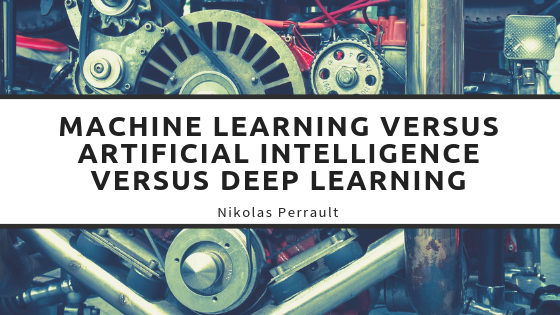Most technology news as of late somehow relates back to artificial intelligence. The seemingly complex and high-brow technology is integrated into mundane items, such as Amazon’s Alexa or Google Home. With talk of artificial intelligence comes machine learning and deep machine learning. The three phrases can often be conflated, but do refer to three specific technologies.
Artificial intelligence and machine learning are related but are not the same thing. Artificial intelligence is the broad concept of the ability of machines to carry out tasks in a smart way. Machine learning is a current use of AI technology based on the notion that machines should be given access to data and learn for themselves.
Artificial intelligence is typically classified into one of two groups: applied or general. Applied AI are systems designed to trade stocks or drive an autonomous car. It’s the more common use of the technology. General AI are systems that can handle any task, in theory.
The emergence of machine learning as the driving force behind AI innovations was the result of two major breakthroughs. The first occurred in 1959 when Arthur Samuel had the realization that it may be more useful to teach computers to learn about the world itself, rather than teaching it everything it needed to know. The other major turning point was the emergence of the internet, and the vast increase in the amount of digital information that is now generated, stored and made available for analysis.
Deep learning is a subset of machine learning. Technically, it is machine learning and functions similarly, but the capabilities differ. Deep learning can learn through its own form of computing. It’s designed to analyze data continuously with a similar logic structure to humans. Deep learning is what powers human-like AI. It relies on an artificial neural network to do this. Deep refers to the many layers that make up the neural network. Having multiple layers is what allows the neural networks to learn parts of the data in a type of hierarchy.
Neural networks are essential to teaching computers how to understand the world as a human does. A neural network is a computer system that is designed to classify information just as a human brain does. It can learn to recognize images and categorize them based on what elements they contain.
Deep learning results in higher accuracy but requires more hardware and time training. Regular machine learning requires less advanced machinery to function.
For those looking for further information on advancements and applications of AI, consider attending the G7 conference held in Montreal on December 6.

